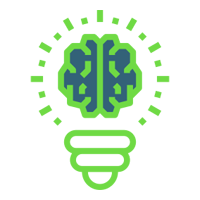Area Questions
FACTS AND FORMULAE FOR AREA QUESTIONS
FUNDAMENTAL CONCEPTS :
I. Results on Triangles:
1. Sum of the angles of a triangle is
2. The sum of any two sides of a triangle is greater than the third side.
3. Pythagoras Theorem : In a right - angled triangle,
4. The line joining the mid-point of a side of a triangle to the opposite vertex is called the median.
5. The point where the three medians of a triangle meet, is called Centroid. The centroid divides each of the medians in the ratio 2 : 1.
6. In an Isosceles triangle, the altitude from the vertex bisects the base.
7. The median of a triangle divides it into two triangles of the same area.
8. The area of the triangle formed by joining the mid-points of the sides of a given triangle is one-fourth of the area of the given triangle.
II.Results on Quadrilaterals :
1. The diagonals of a parallelogram bisect each other
2. Each diagonal of a parallelogram divides it into two triangles of the same area.
3. The diagonals of a rectangle are equal and bisect each other.
4. The diagonals of a square are equal and bisect each other at right angles
5. The diagonals of a rhombus are unequal and bisect each other at right angles
6. A parallelogram and a rectangle on the same base and between the same parallels are equal in area.
7. Of all the parallelogram of given sides, the parallelogram which is a rectangle has the greatest area.
IMPORTANT FORMULAE
I.
1. Area of a rectangle = (length x Breadth)
2. Perimeter of a rectangle = 2( length + Breadth)
II. Area of square =
III. Area of 4 walls of a room = 2(Length + Breadth) x Height
IV.
1. Area of a triangle =
2. Area of a triangle = , where a, b, c are the sides of the triangle and
3. Area of an equilateral triangle =
4. Radius of incircle of an equilateral triangle of side
5. Radius of circumcircle of an equilateral triangle of side
6. Radius of incircle of a triangle of area and semi-perimeter
V.
1. Area of a parallelogram = (Base x Height)
2. Area of a rhombus =
3. Area of a trapezium =
VI.
1. Area of a cicle = , where R is the radius.
2. Circumference of a circle = .
3. Length of an arc = , where is the central angle.
4. Area of a sector =
VII.
1. Area of a semi-circle =
2. Circumference of a semi - circle =

 Aptitude and Reasoning
Aptitude and Reasoning General Knowledge
General Knowledge Puzzles
Puzzles Interviews
Interviews Technical
Technical Certifications
Certifications Exams
Exams Job
Roles
Job
Roles True or False
True or False Exams
Exams
